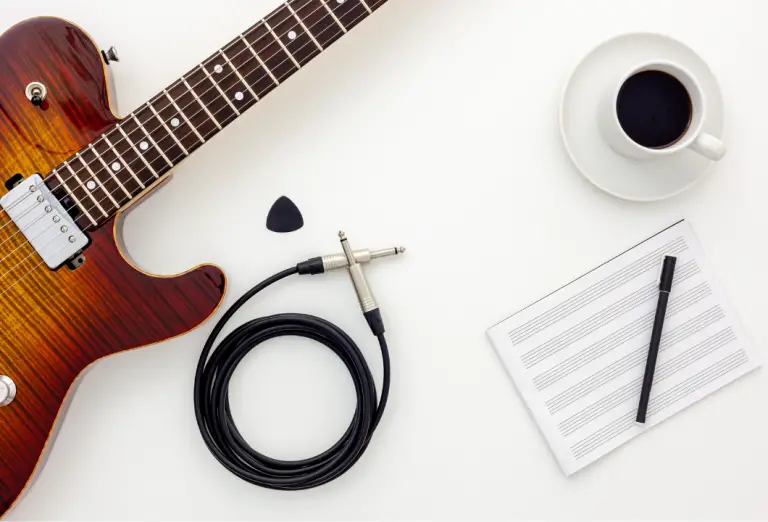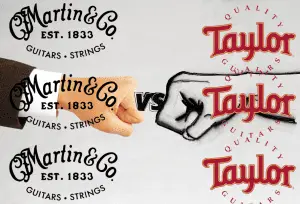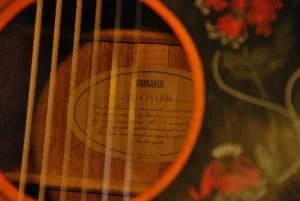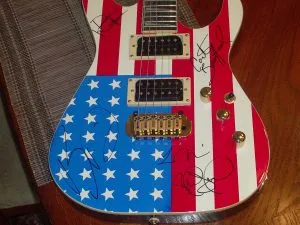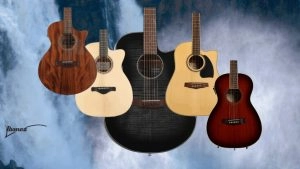The G major scale is one of the first scales you learn on your lifelong guitar journey.
Along with C major, G major is one of the easier scales to learn because there is only one sharp note (F#), and many popular songs are written in the key. Additionally, the G chord is one of the first chords you learn on guitar — and if you know the chord, you’ll quickly pick up learning the scale.
Any major scale — including the G major scale — can be perfected by practicing the various patterns I will lay out in this article. By doing so, you’ll understand each note in the scale and continue your mastery of the fretboard.
• • •
What Is The G Major Scale?
The G major scale is one of the most common scales in music. It’s used in various genres, from country to metal, and you can play it on any instrument. Along with the piano, it’s likely easiest to play it on the guitar.
Notes of the G Major Scale
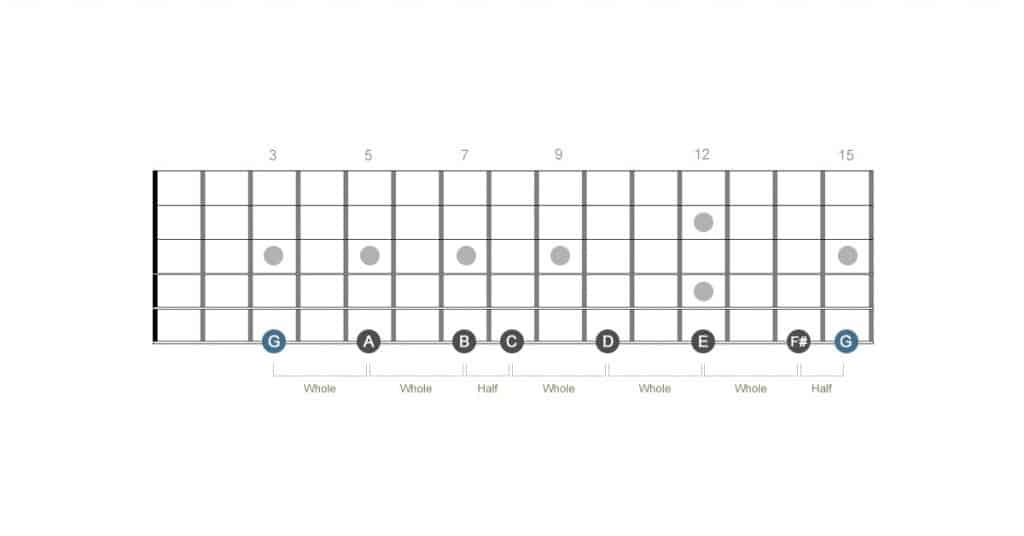
The G diatonic major scale seven notes are as follows: G, A, B, C, D, E, F#, and G (octave).
As you study this scale, you will figure out the alternative scales to G major that use the same notes.
For example, the relative minor key of G major is E minor. The Em scale runs E, F#, G, A, B, C, D, and E (octave).
I always recommend practicing all scales by starting on each of the notes and running it up the octave instead of only practicing root to octave. By doing so, you’ll also perfect other scales. In the G major scale, you would also learn the E minor scale.
Intervals of the G Major Scale
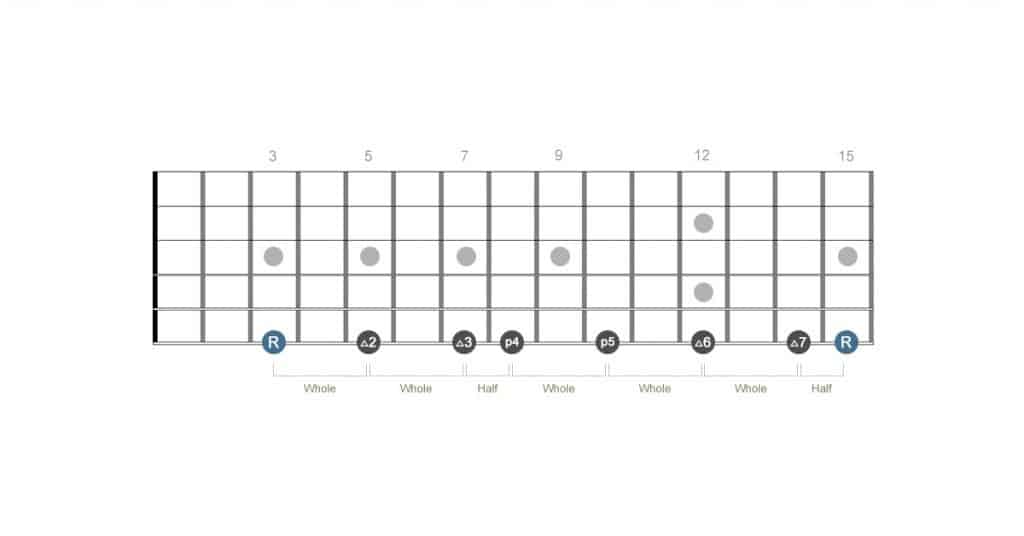
One of the best ways to fully understand the notes of the G major scale is to think of them in terms of intervals.
Many jazz, blues, and even rock players think of music in intervals — or numbers of the scale when practicing.
The G major scale starts on the root note, also referred to as the one (1). Each of the other notes is located a number of half steps away from it. Every note in the scale is separated from the root by a predetermined interval depending on the number of half steps between the two notes:
- Root (R): G
- Major 2nd (∆2): A (separated from the root by two half steps)
- Major 3rd (∆3): B (four half steps away from the root)
- Perfect 4th (p4): C (five half steps away)
- Perfect 5th (p5): D (seven half steps away)
- Major 6th (∆6): E (nine half steps away)
- Major 7th (∆7): F# (eleven half steps away)
- Octave (R): G (twelve half steps away)
These intervals, or numbers, also help you shape more intricate chords. The Gmaj7 chord, for example, is a G chord with the addition of the major 7th in the scale. If you refer to the chart above, you’ll know that you’ll also need an F# in that chord.
You commonly see a Gadd4 chord, which is a G chord with a perfect 4th, or a C note. I often add the D note on the 2nd string when strumming a G chord because it gives it a fuller sound.
• • •
The G Major Scale: How to Play it On Guitar

Let’s get into the nitty-gritty on how to actually play the G major scale notes from root note to root note across the entire fretboard.
The first way to learn the scale is by combining fretted and open strings near the bottom of the fretboard, where you commonly shape a G chord.
To play the G major scale, start by playing the G note on the third fret of your guitar’s sixth string (low E string). Then, play the open A note on the fifth string, followed by B on the second fret of the fifth string and C on the third fret of the fifth string. Next up is the open D (fourth string), then E on the second fret of the fourth string, F# on the fourth fret of the fourth string, and the G one octave above the root note on the open third string.
You can continue up the scale by fretting the A note on the second fret of the third string, open B on the second string, C (first fret of the second string), D (third fret of the second string), E (open first string), F# (second fret of the first string), and G (third fret of the first string).
That’s how most people learn to play the G scale and don’t advance past that part of the fretboard. To REALLY understand the scale, you need to learn how to play it across all fretboard positions.
G Major Scale Guitar Positions
The G major scale is no different than the other major scales: there are five positions you NEED to learn to understand the scale across your entire guitar fretboard fully. Those positions are known as the CAGED system.
CAGED is an acronym related to the scale’s different chord shapes. For the G major scale, we’
ll start in the open position, which refers to the G in CAGED, and work our way up the fretboard.
Open Position (G position)
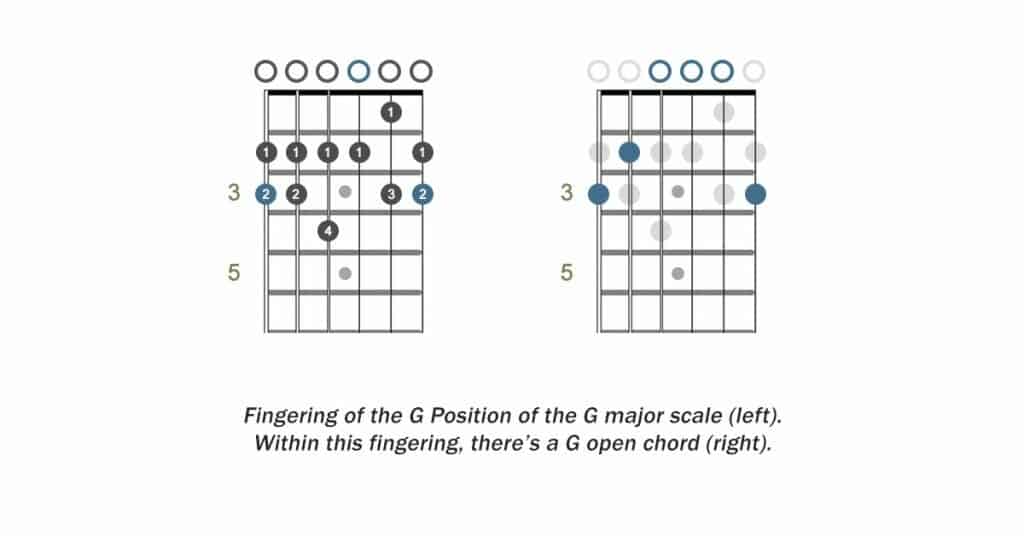
The best way to run the open position of the G major scale is to first form a G major chord in an open position near the bottom of your fretboard (refer to the graphic above). If you run the scale between its root notes, you’ll fret notes on all of the strings.
The open position easily allows you to run the scale through two octaves.
Here are the intervals of the open position:
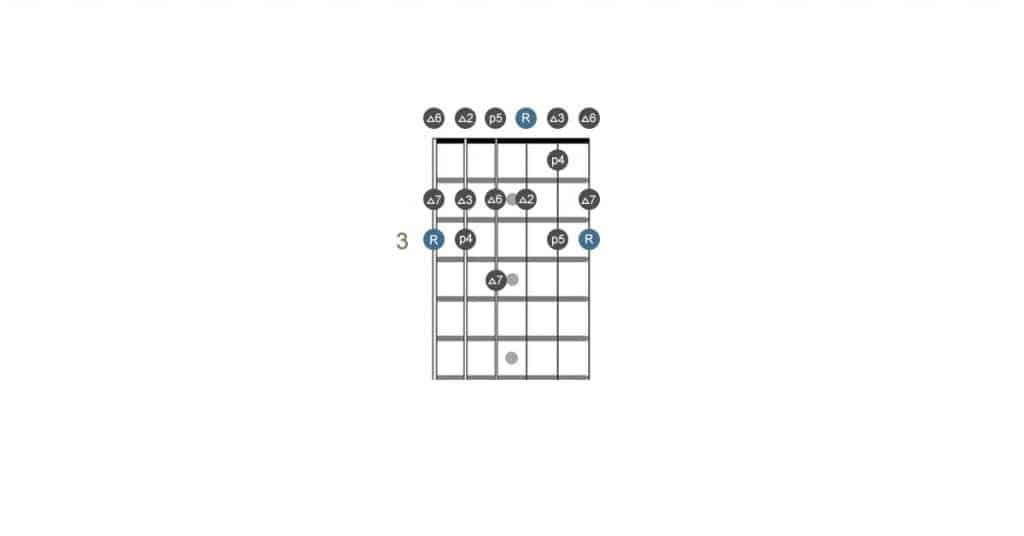
Here’s the guitar tab for the open position:
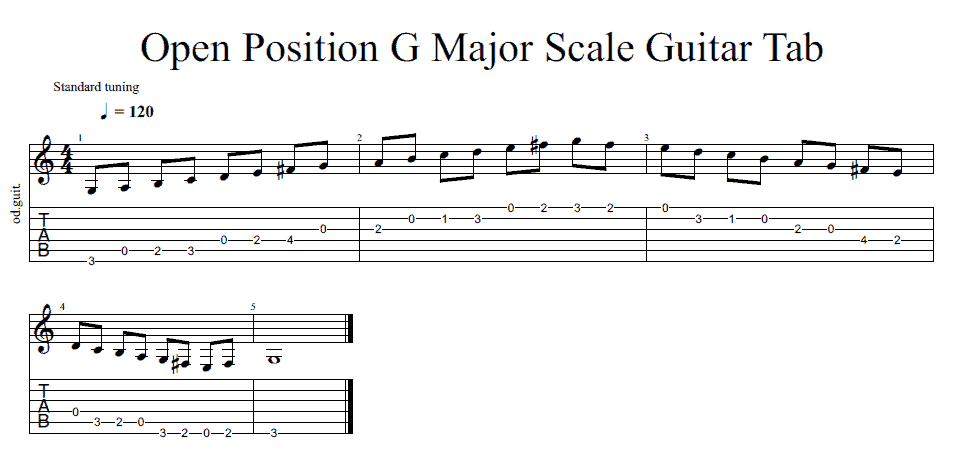
As we mentioned, most people never go beyond the open position, but we’ll continue our journey throughout the fretboard.
Position 1 (E position)
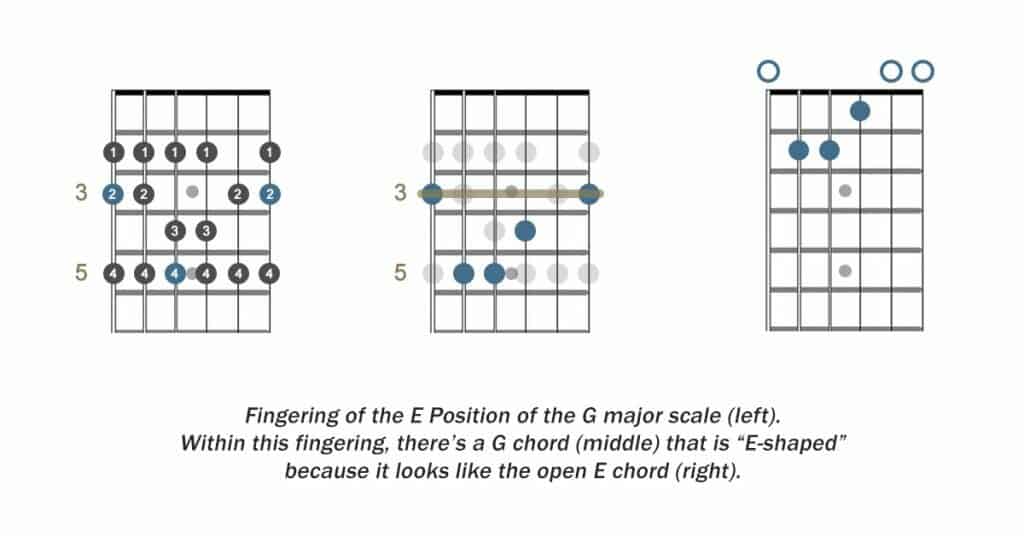
Position 1 refers to the E in CAGED. This could also be referred to as the “barre chord position” as barre chords are typically done by shaping an E chord with your middle, ring, and pinky fingers while barring all the strings with your index finger.
In my opinion, this is one of the most helpful major scale positions to learn if you’re interested in learning all 12 major scales. Most guitar players can tell you the note of any fret on the high E and low E strings, but not everyone can identify the notes in the middle of the fretboard on the 4th string, for example. Understanding those root notes can allow you to run the scale from root note to octave twice over.
Here are the intervals of the scale in the E position:
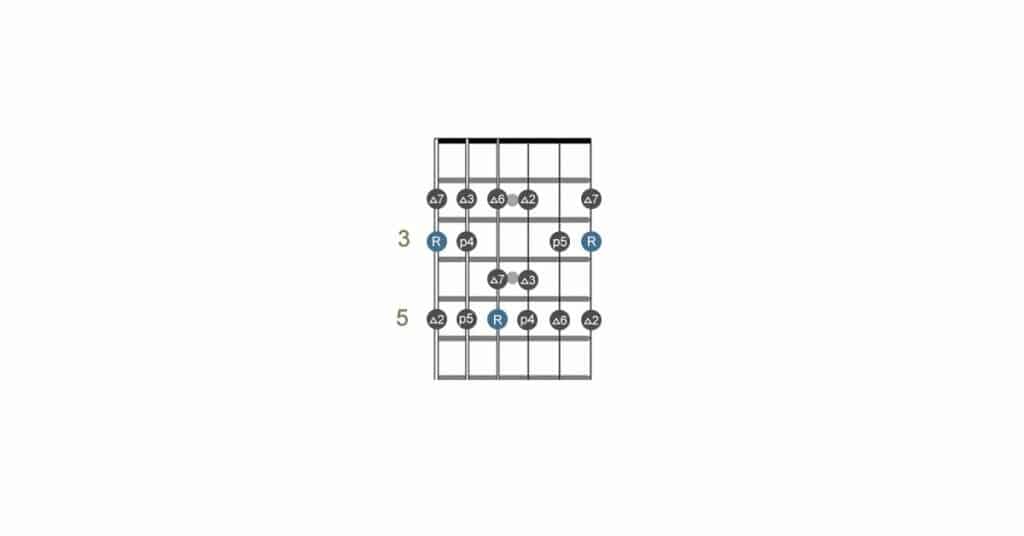
And here’s the guitar tab for the E position:
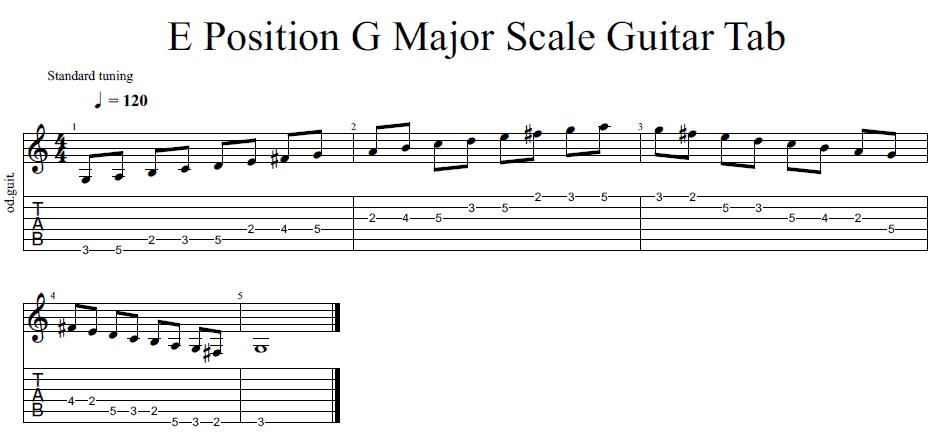
Position 2 (D position)
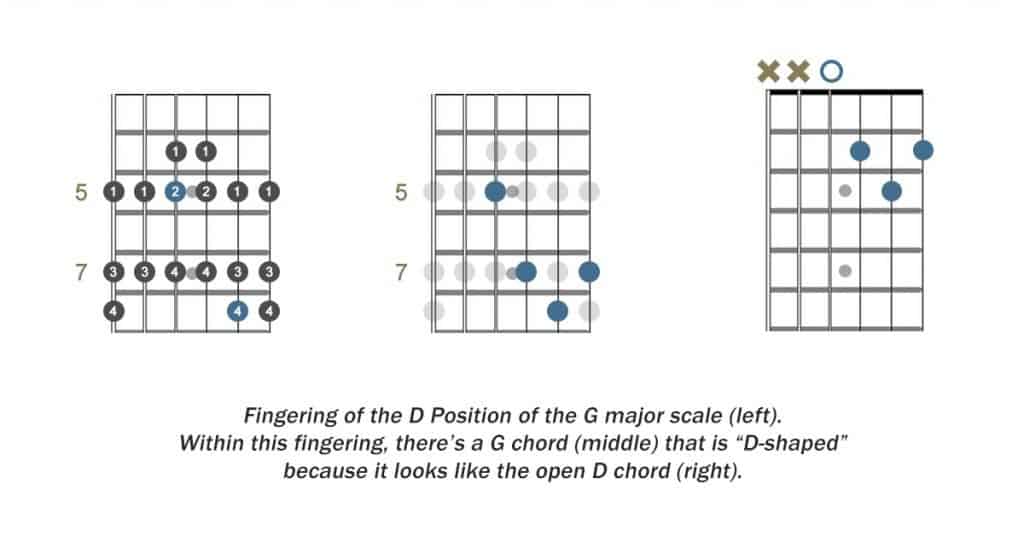
The second position refers to the D position, which means shaping a D chord on the seventh fret, while barring the fifth fret.
You can refer to the guitar chart to understand how to run the scale, but one way to better grasp the music theory behind the scale is to think about the shaping and position of the D chord.
An open D chord is typically shaped across the second and third frets of the first, second, and third strings, in a triangle shape. If you move that up five half steps to the seventh fret, that same D chord shape now makes a G chord.
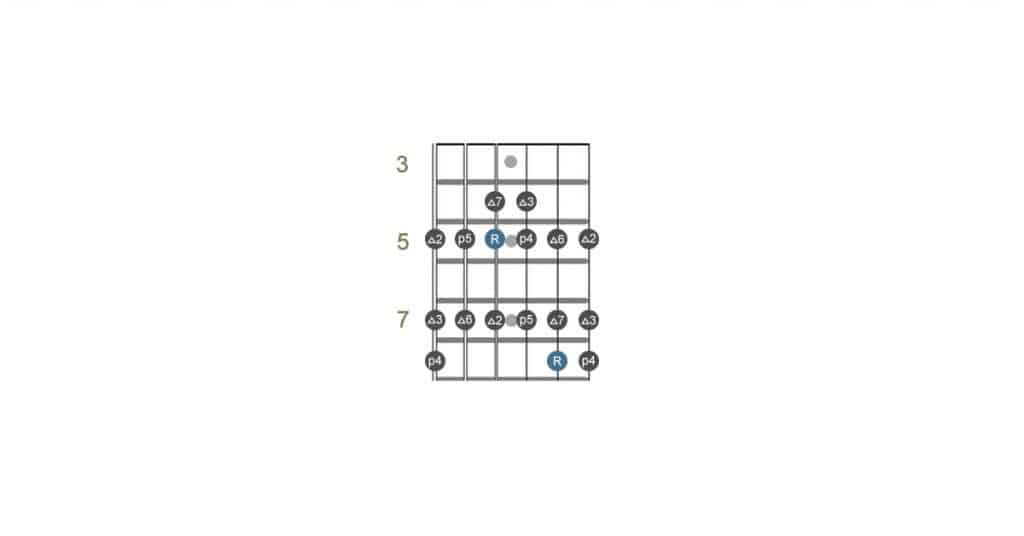
Here’s the tab for the D position of the G major scale on guitar:
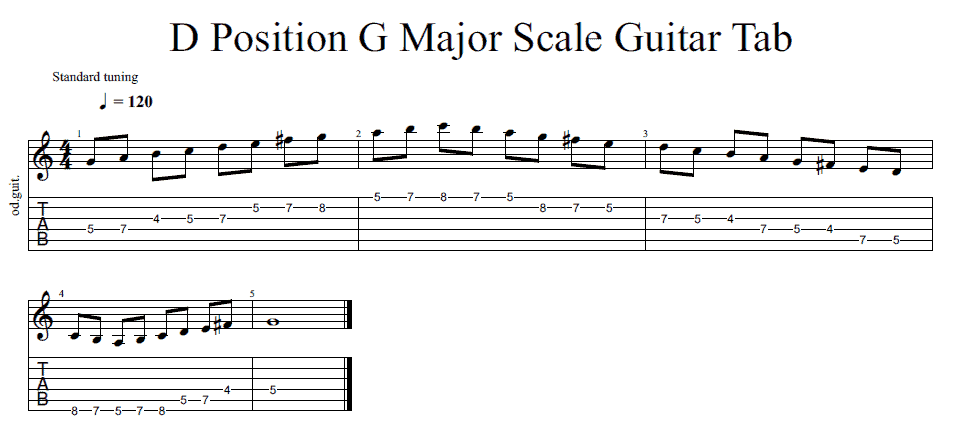
Position 3 (C position)
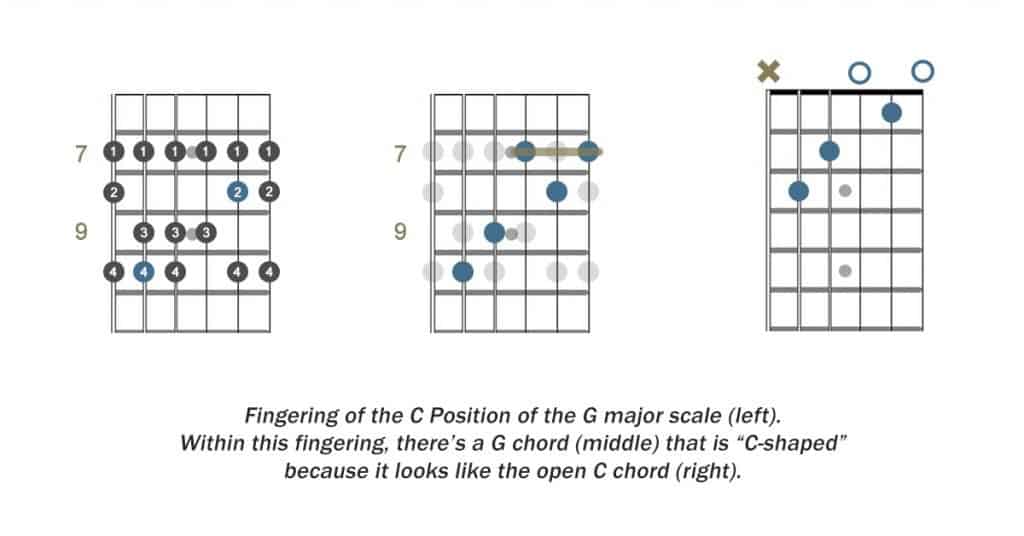
The third position is typically the trickiest because you need to form a C chord shape while barring your index finger across the seventh fret. You’ll get better at it as you practice the diagram above.
The diagram below shows the various intervals of the G major scale at that particular position.
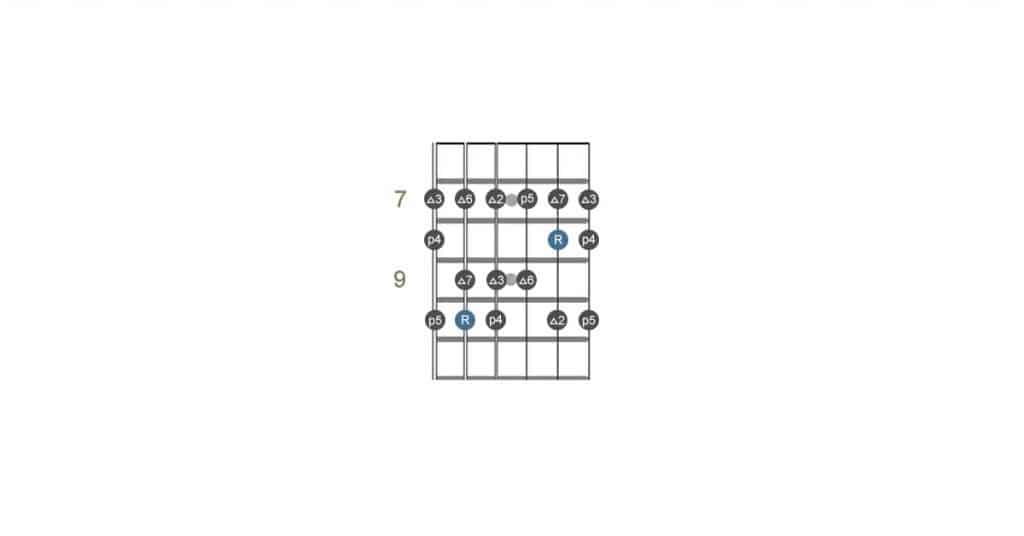
Here’s the tab for the C position of the G major scale on guitar:
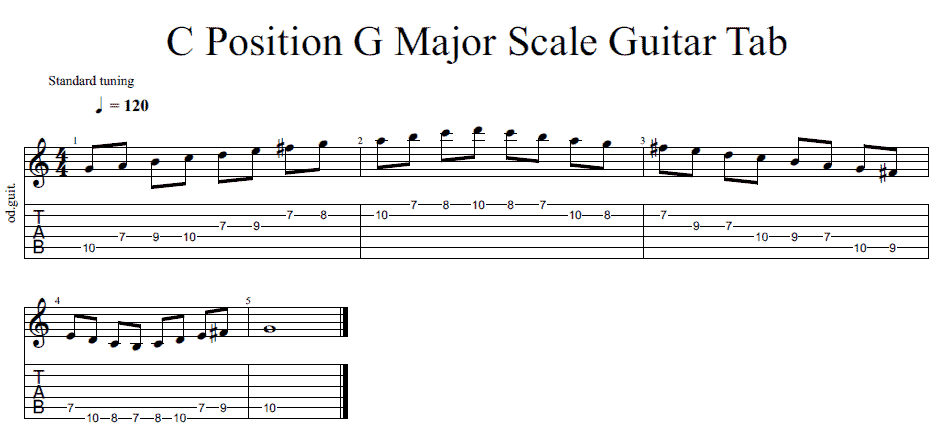
Position 4 (A position)
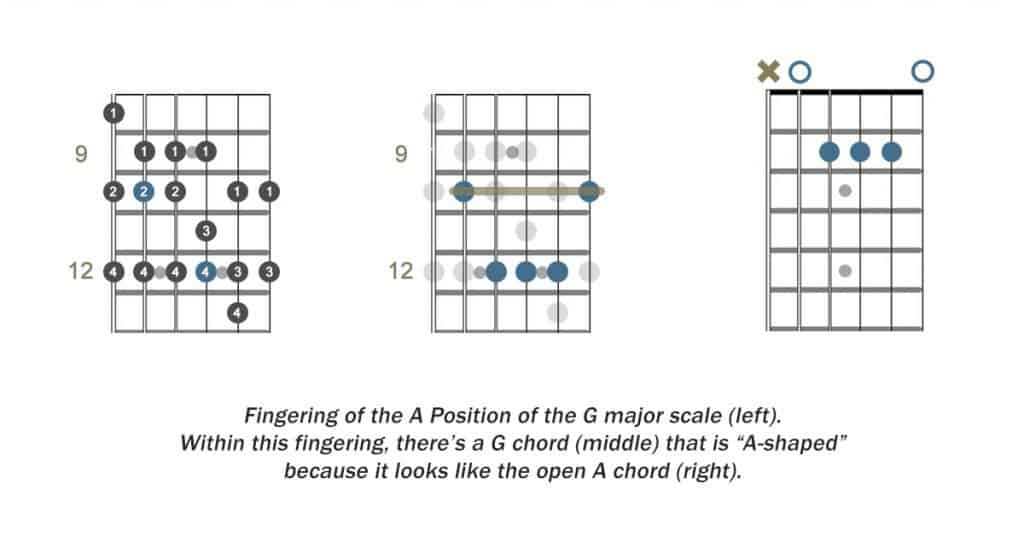
The fourth position of the G major scale is much higher up on the fretboard and refers to the A in CAGED.
Form a traditional A chord shape on the 12th fret while barring the tenth fret on your guitar with your index finger to create a G major chord.
Here’s the A position with intervals:
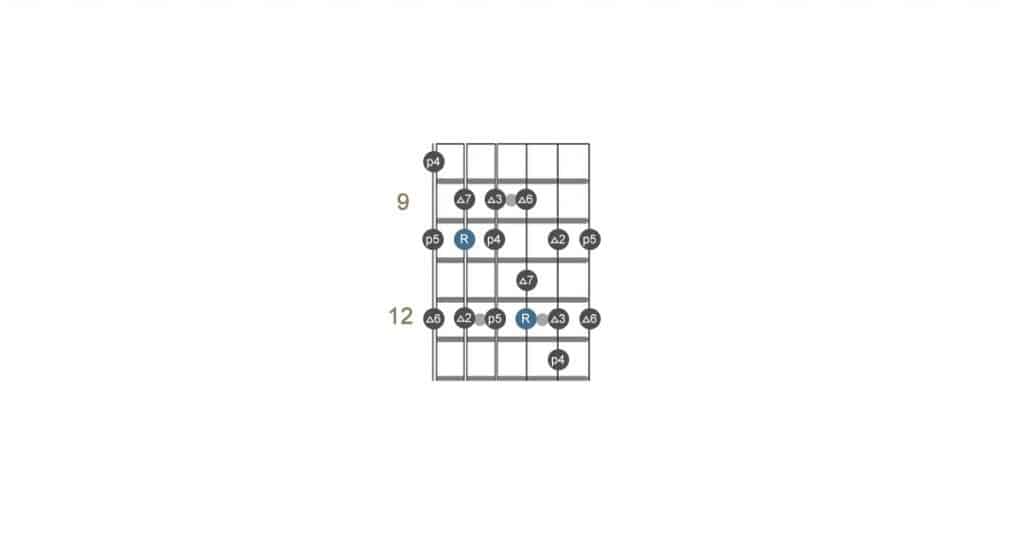
Here’s the guitar tab for the A position:
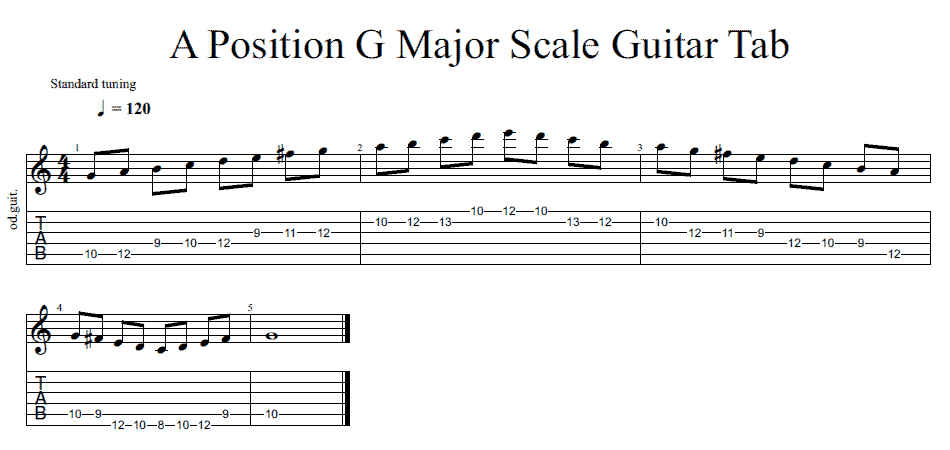
Position 5 (G position)
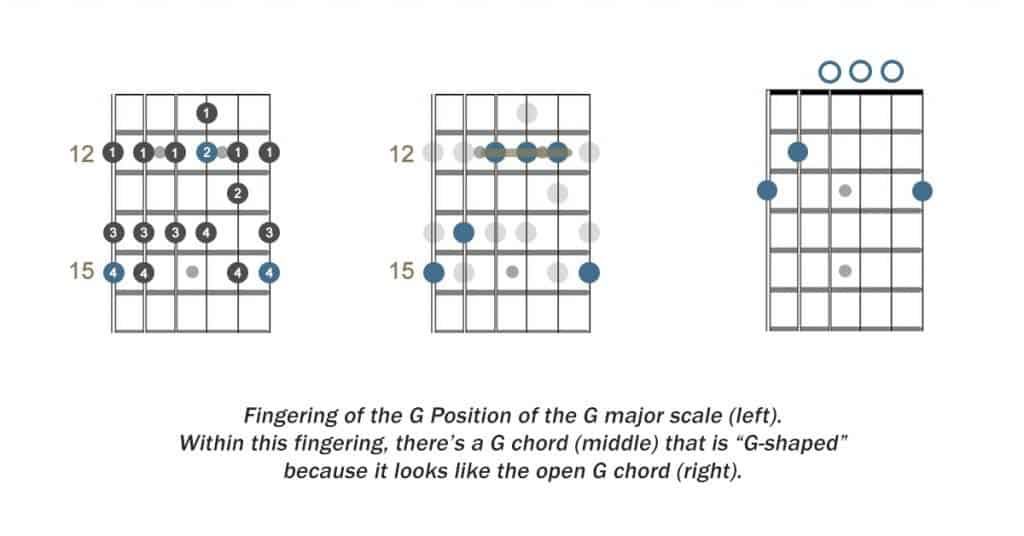
The fifth position again refers to the G in CAGED, but this time it’s one octave up from the open position.
The scale is identical to the open position, but it’s on the 12th fret, which is one octave higher than open strings.
Check out the intervals at this position on the fretboard:
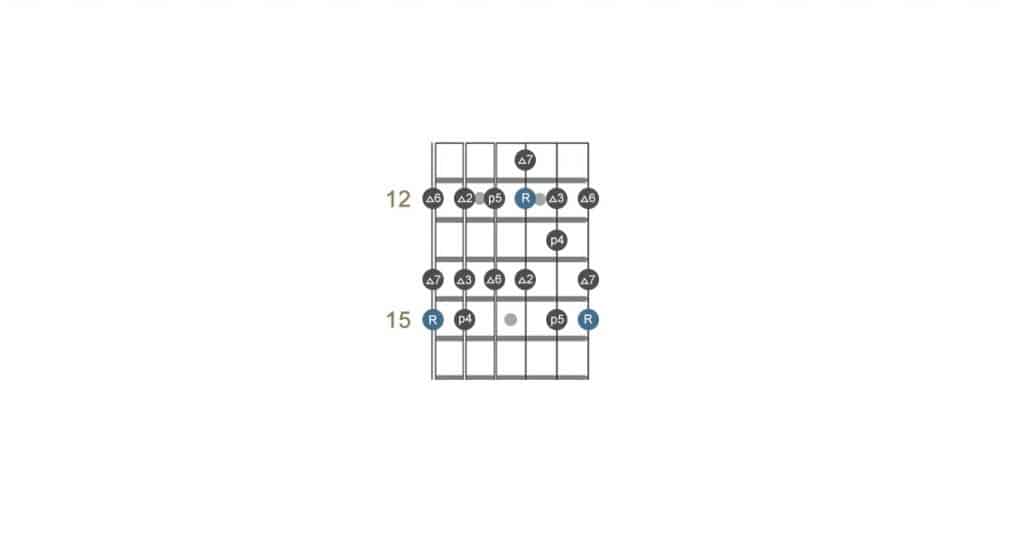
Here’s the tab for the G position:
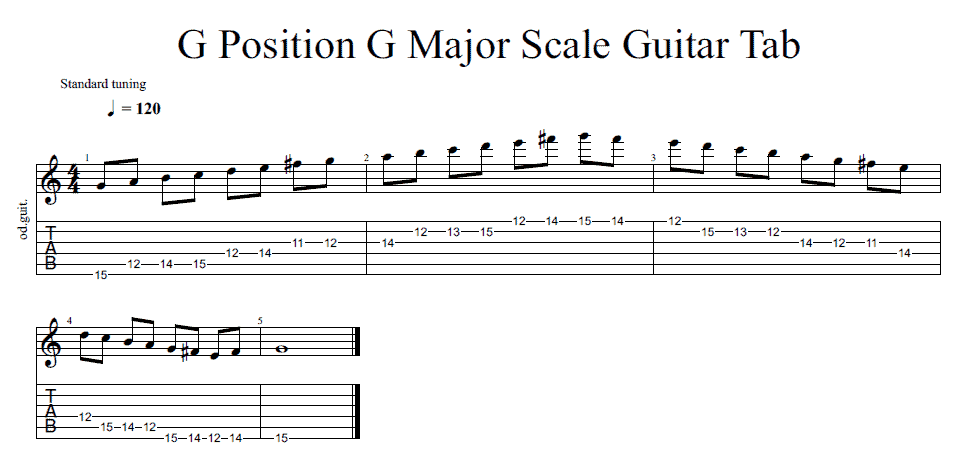
Single-Octave G Major Scale Patterns On Guitar
Practicing the CAGED positions is the best way to learn a major scale, but it can be a bit daunting for beginners. That’s why I recommend starting with single-octave patterns.
How To Play The G Major Scale Starting From The 6th String
Starting the G major scale from the sixth string is the open position. Your G note (root) is on the third fret of the sixth string, and you can run it up to the open third string or the fifth fret of the fourth string.
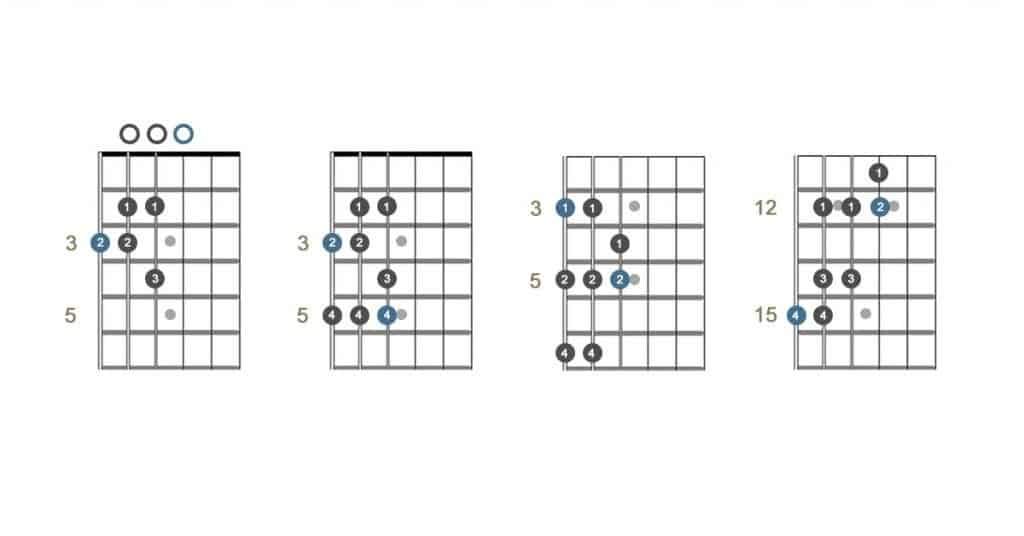
How To Play The G Major Scale Starting From The 5th String
Because the fifth string is an open A, you must move up the fretboard to find your root notes.
The root can be found on the 10th fret of the fifth string. Follow the diagrams below to run the single-octave scale.
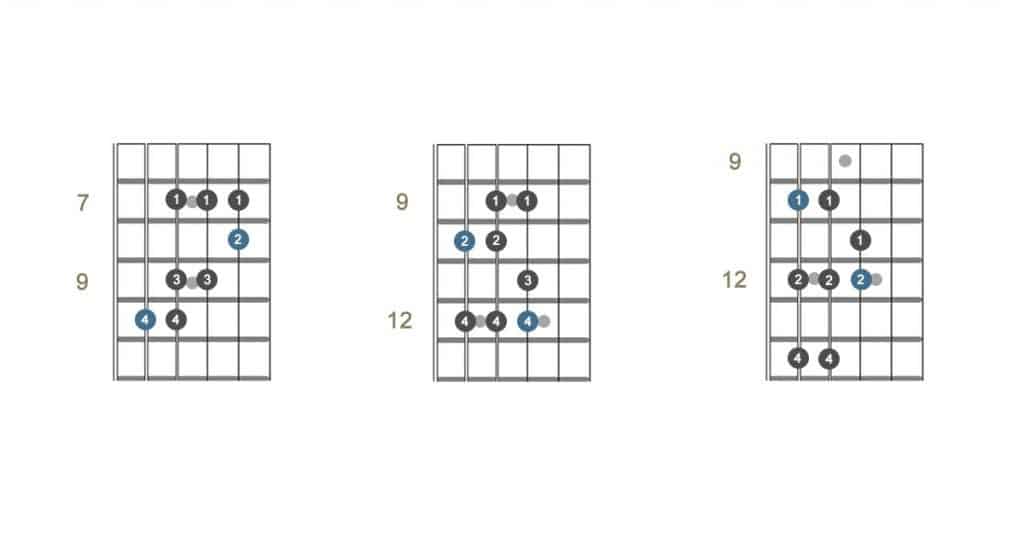
How To Play The G Major Scale Starting From The 4th String
The G major scale from the fourth string begins on the fifth fret and works up to the third fret of the first string.
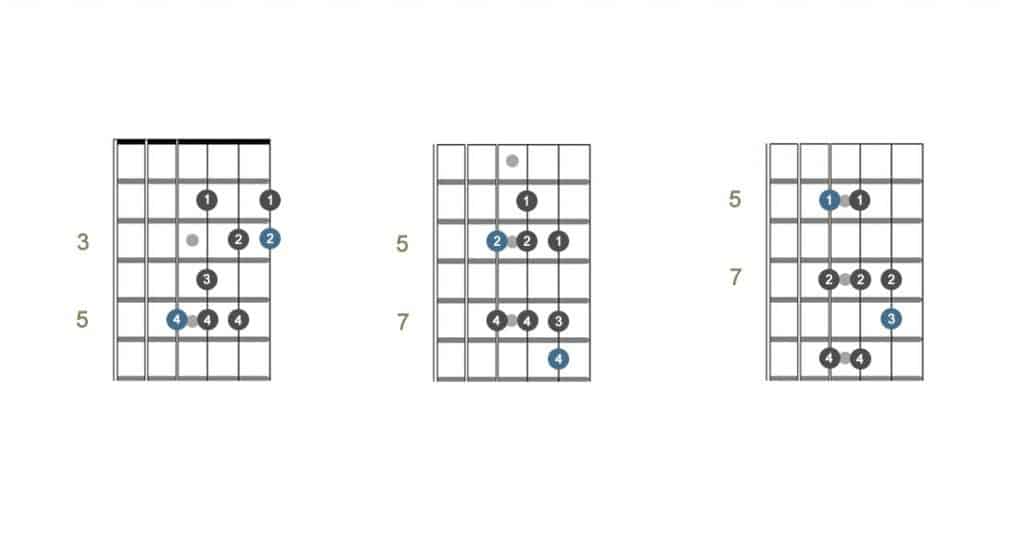
How To Play The G Major Scale Starting From The 3rd String
The most common way to run a single-octave G major scale is by starting on the open third string and then running the same notes up to the high G on the first string.
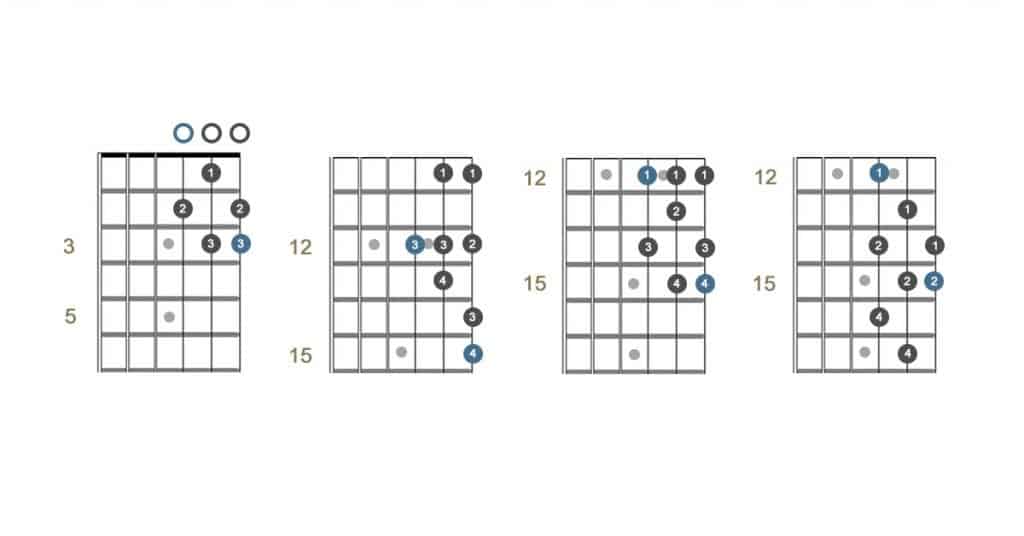
G Major Scale Chords On Guitar
As mentioned, the G scale is the source of several commonly used chords.
G Major
Let’s start with the root chord. A G chord is made up of G, B, and D. That’s the first, first, third, and fifth of the scale.
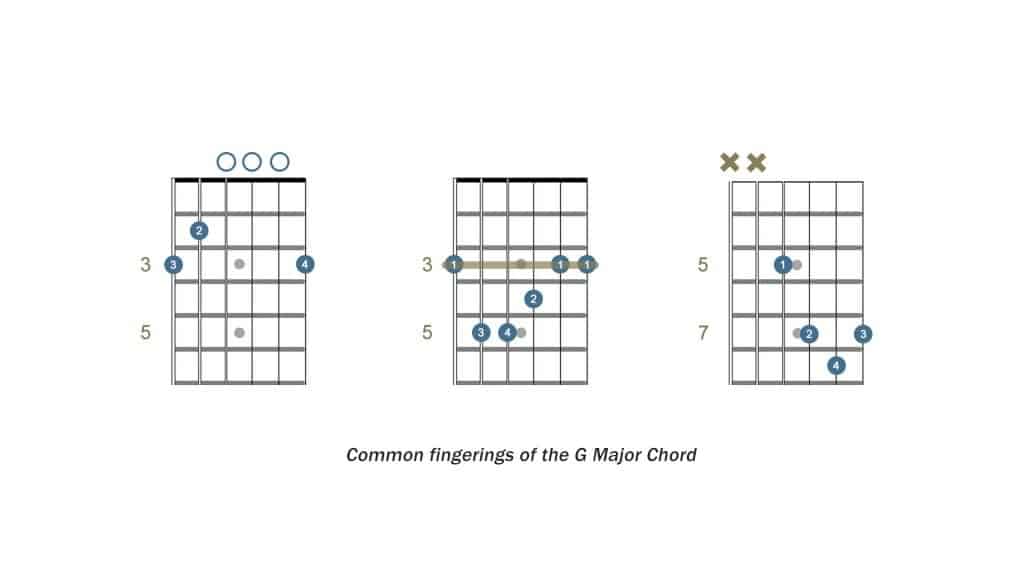
A Minor
The A minor chord consists of A, C, and E, which are the second, fourth, and sixth degrees of the scale.
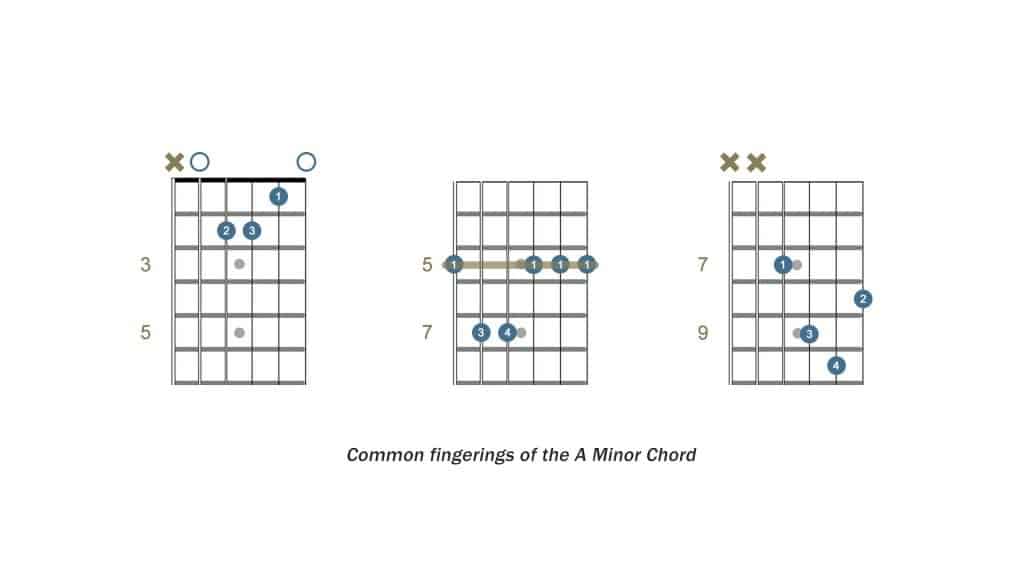
B Minor
The B minor chord is made up of B, D, and F#.
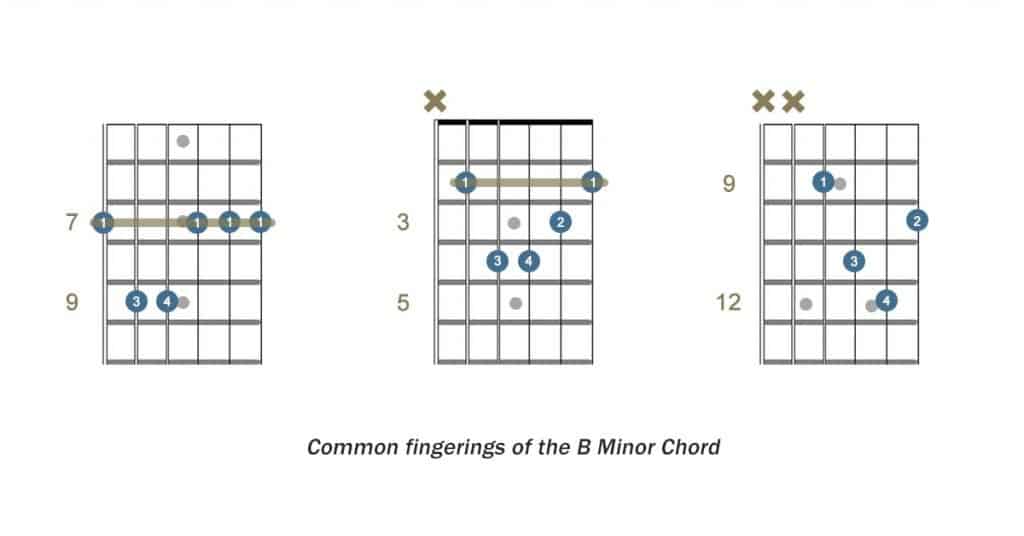
C Major
You can also find the notes — C, E, and G — inside the G scale. That’s why you frequently use the c major chord used alongside a G chord in popular music.
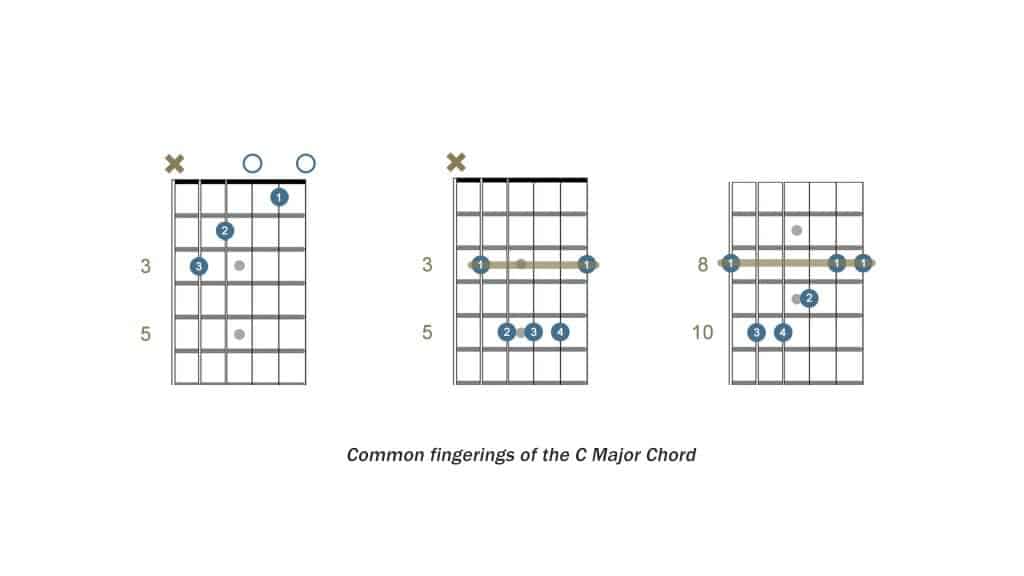
D Major
The D major chord is made up of D, F#, and A. The third of the D major chord is the seventh of the G scale.
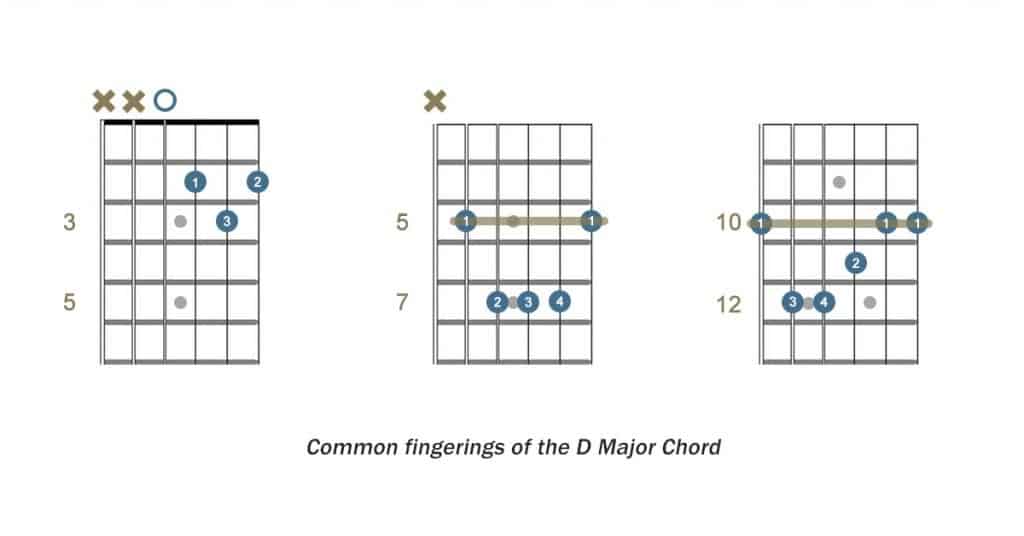
E Minor
An E minor chord is made up of E, G, and B.
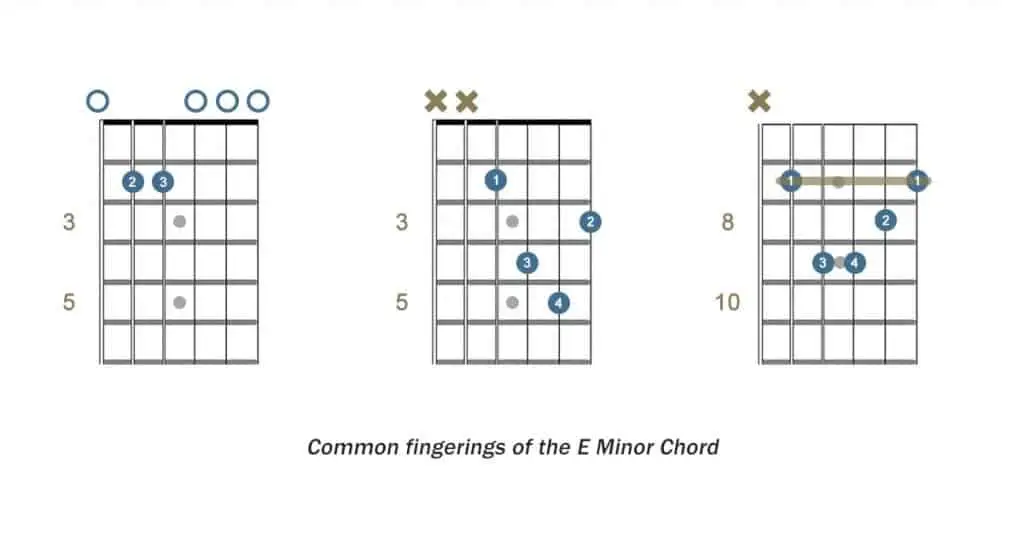
F# Diminished
Finally, the F# Diminished chord is made up of F#, A, and C. The chart below shows this chord with an added 7th (E), which is a common way of playing diminished chords.
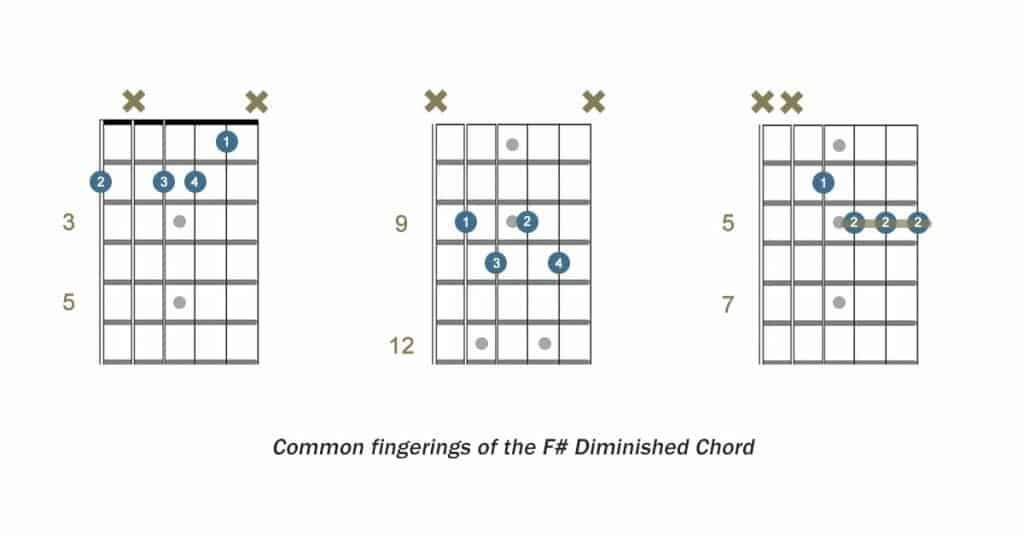
Exercises
If you practice the diagrams above, you’ll be in great shape, but there are a number of exercises you can find online through reputable teachers. These are some of my favorites:
Justin Guitar is one of the best teachers who offer free YouTube guitar lessons and premium online guitar lessons. I appreciate how his videos include diagrams as he runs guitar scales.
Banjo Ben Clark offers some great exercises to enhance the speed when you play scales.
A helpful way to learn scales is by playing in thirds. That’s when you play every other note of the scale. Justin Guitar does a great job of explaining this method and exercise.
• • •
FAQ
Here are other helpful questions about this key and scale:
Is G major a happy key?

Most major keys, including G, could be considered happy keys. Minor keys tend to sound sad.
What capo is key of G?
The third fret is the key of G when using a capo because you can form an open E on the neck to strum a G chord.
What is the first chord in G major?
The first chord in G major is a G chord, which is made up of G, B, and D.
What is the key signature for G major?
The key signature of G major has one sharp — the F#.
Is G major the same as E minor?
While G major isn’t considered the same key as E minor, it does use the same notes. E minor is the relative minor of G.
How do you know if a song is in G major or E minor?
A song in a major key tends to sound happier and more complete. Jimi Hendrix’s “Little Wing,” for example, lands on the tonic frequently — the G — which suggests it’s in G major. Minor songs will sound sad and not as bright or happy. Nirvana’s “Come As You Are,” is a great example of a song in E minor.
How does C major differ from G major?
C and G major share several of the same notes, but there’s an F# in the G scale, while there are no sharps or flats in the C scale. All the other notes are the same, though, but just in a different order.
• • •
Keep Learning!
Check out these other major scale articles: A, C, D, and E.


